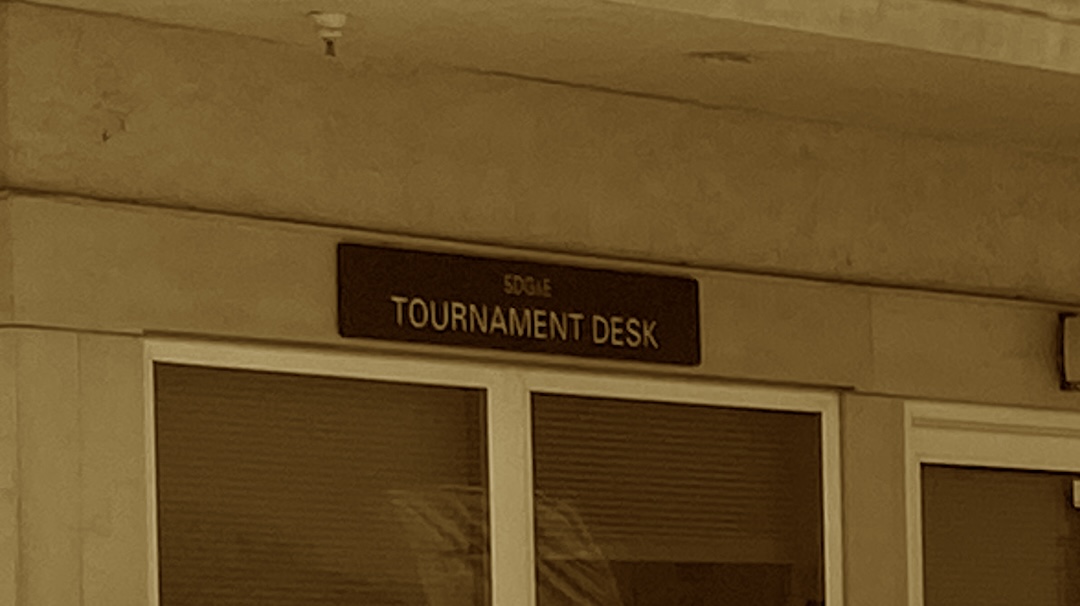We’re in the midst of a detailed breakdown of a fascinating episode that occurred earlier this year at the Tom Fey Tri-Level National Invitational Championships. This has been a meandering, lengthy journey of indulgence, allowing me to geek out over the rules and regulations. Last Wednesday, we started an examination of the sportsmanship issues that both caused and influenced what transpired. Today, I am delving into what I strongly suspect was the driving force behind all that happened.
THE CODE in the USTA’s Friend at Court outlines the sportsmanship policy that applies to all sanctioned play in the United States. Last Wednesday’s post described that authoritative and binding resource that guides player behavior. One of the attributes of good sportsmanship in that list is “Winning with humility and losing with grace.” It is a tennis-specific manifestation of the golden rule: Treat others how you want to be treated.
Since I was not at the Tom Fey Tri-Level National Invitational Championships this year, my understanding of what transpired relies on other people’s accounts. Even if I had been a witness, speculating on the thoughts and motivations of those who were directly involved in the controversy is an extraordinarily slippery slope. Nevertheless, I feel like it is important to delve into the culture and psychology that likely contributed to this and similar episodes.
Sadly, it is not unusual for a team competing in Sectionals or Nationals to develop a serious hate for another team they compete against at the event. The “justification” for that emotion can be rooted in a chippy match, bad line calls, or simply the way that the players cheered and acted. Another more subtle reason animosity can arise is if one of the teams appears to be significantly stronger than the others at the event. I suspect the latter factor was a major driver in this particular situation.
Many teams arrive at Championship events believing they have a chance to win it all. Getting thumped by another team somewhere along the weekend shatters that illusion. Unfortunately, one common pattern of that emotional processing puts teams into a mindset I once described in “Faux NTRP Scoundrels.” To summarize that post, they decide the other team is filled with sandbagging jerks.
When that happens, some people who just had their Championship title aspirations shattered unite behind a new purpose: doing everything they can to keep the team that defeated them from winning. What could have been processed with an attitude that the other team was just too good sparks a range of actions. It spirals into a total breakdown of “Winning with humility and losing with grace.”
The USTA League Regulations contain provisions for filing and processing grievances at all levels of competition. This must be in place in the event a team genuinely does something wrong. A captain who perceives that another team at their event deserves to be punished can levy a litany of complaints against them. The grievance process is the formal way that is supposed to occur.
Usually, the Championship committee strives to diffuse the situation. Unfortunately, a decision was made to take action in this case. My theory is that perceptions may have been influenced by the fact that the captain of the penalized team brought more than one team to the Championships this year. In fact, one of that captain’s other teams also had a separate rules debate with the Championship Committee that weekend. I think the event administration itself may have formed the impression that a captain who brings more than one team to a single Championship event must be doing something untoward to accomplish that.
I found no evidence that the prevailing team failed to win “with humility.” Showing up with a strong team does not violate that principle. On the other hand, a bitter vanquished team that levies complaints, files grievances, and insists that the other team be punished for violations of dubious rules is not consistent with “losing with grace.” It is quite the opposite.
What ultimately happened at the Tom Fey Tri-Level National Invitational culminated in two players receiving 8 suspension points. That is a very serious outcome. Tomorrow, we will start to examine what should have happened throughout the grievance process and the suspension point system that led to that result.
In the meantime, I can’t help but think that the guys who were punished in this episode weren’t the actual sportsmanship offenders.
- USTA Tri-Level National Invitational Welcome Page, USTA SoCal Hosted Informational Page, last viewed April 6, 2024.
- 2024 USTA League National Regulations, USTA Resource Document, March 14, 2024.
- Friend at Court: The Handbook of Tennis Rules and Regulations, USTA, 2024
- USTA Adult and Family Tournament, Ranking, & Sanctioning Regulations, USTA Regulation, as amended December 14, 2023.
- USTA League Suspension Point System Calculation Tables, USTA Resource Document, February 6, 2024.
- USTA League Suspension Point System 2024, USTA Resource Document, February 6, 2024.
- USTA League Suspension Point System Frequently Asked Questions, USTA Resource Document, March 23, 2023.




Just speaking about the sandbagging aspect you mention, it is prevalent in USTA and a major problem. That’s no excuse for acting disrespectful though. There’s many different ways to sandbag though. And the people that complain about it are probably doing it themselves in some way, but maybe to a lesser extent. The only question is where is the line on all of this. The USTA doesn’t monitor this well at all, which leads to it happening even more and is contradictory in my experiences on how they manage it. I feel the people complaining most of the time would’ve gladly taken those ‘sandbag players’ themselves if given the chance, which is ridiculous on many accounts. Maybe if it is so blatant, some complaining might be acceptable, but that is still very subjective and emotions cloud people’s thinking on the matter.
The rules say that if a player improves throughout the year and they’re playing at a lower level than they should be, they should bump themselves up. This rarely happens though. This might be mostly geared at newer players, too, but probably not entirely.
Sandbagging doesn’t just mean tanking matches the previous year to get a lower rating in the future. Teams/players could manage ratings by hiding players in only mixed, or only playing tri-level, or playing fewer matches, or playing singles instead of dubbs or vice versa. None of these things are necessarily sandbagging nor wrong though, but could be. Part of the problem is how ratings are calculated and there leaves a lot to be desired with them. But probably the biggest issue is S players. The ratings guidelines are too vague and too broad. It’s great an S player or a newer C player is improving during the year. Most of us should be improving as we play more tennis. Sure, that should be applauded but also these players should bump themselves up if the USTA doesn’t do it if they’re playing below level as the rules state. For example, if you’re playing at Nationals for 4.0, you shouldn’t be encountering anyone at a mid 4.5 level or higher, but obviously this is happening every year. The only thing I could think of about that, that seems possibly passable would be if a player has been 4.0 C for multiple years and suddenly greatly improves one year but this seems like a very rare chance of happening.